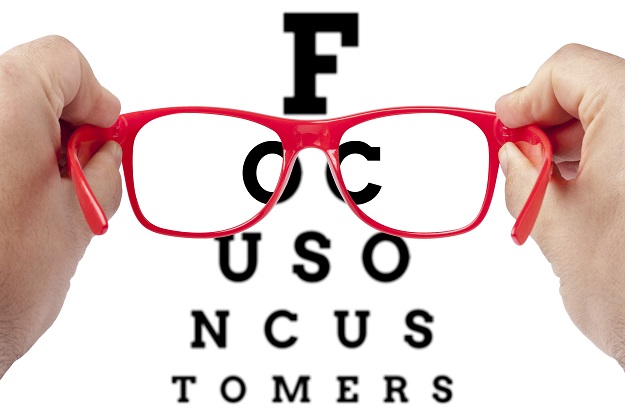Topics
3 Ways Training is the Best Answer to Customer Centricity

Knowing your customer well is the best shot you have at staying relevant in most industries today; the same is true for trainers, learning and HR professionals.
Anthony J. Rucci, executive vice president at Cardinal Health, says the number one question you should know the answer to in order to truly drive value via Talent Management is, “Who is your core customer?” This goes for the people served by your business and the people served by your training practice, whether they are the same or different.
Here are three ways training will serve customer-centricity:
-
 Good training sets an example by integrating the overall customer-focused vision.
Good training sets an example by integrating the overall customer-focused vision.
When the customer is in the room (figuratively or in the form of an empty chair), not only is training more impactful, a certain mindset is being taught to your employees.
“Customer centricity needs to be designed for employee execution and ensure that each employee is ready, willing, and capable of delivering on the customer-centric strategy,” Strativity writes in its recent Harvard Business Review report, “Making Customer-centric Strategies Take Hold.”
Top leadership should clearly set the strategic vision so that it is natural to centralize training design around the customer and natural to implement on the floor. Be sure your learning initiatives use the same language senior leaders use; tap into the purpose shared by all.
 Happy employees make happy customers. When you earnestly invest in your employees, in time as well as dollars, they deliver, especially when we're talking about customer-facing workers. Knowing you're valued can make all the difference in your performance.
Happy employees make happy customers. When you earnestly invest in your employees, in time as well as dollars, they deliver, especially when we're talking about customer-facing workers. Knowing you're valued can make all the difference in your performance.
Bring in the ‘voice of the employee' as a requirement for your training design through use of surveys, focus groups, or other design interventions. The NBCUniversal Talent Lab adopts the language of its associates in order to meet them where they are, exactly the definition of customer-centricity.
According to Deloitte's 2016 Report on Global Human Capital Trends, "The chief learning officer has the opportunity to lead the charge to make L&D professionals more like product managers working for customers who have unfulfilled needs, rather than simply designers of courses that employees are required to complete.” Think about your learner as your customer: what would please them? How do you know?
 Strong evaluation of training initiatives will show customer satisfaction through business performance. Training initiative will be held to the same expectations that trainees are held to. If you ask learners what's important to them, they will likely echo the metrics they've been told they must impact; so share that burden with them. Learning and training ROI is a becoming a required business benchmark for many management teams. Design your training with outcomes in mind and hold the training and facilitators accountable for business metrics.
Strong evaluation of training initiatives will show customer satisfaction through business performance. Training initiative will be held to the same expectations that trainees are held to. If you ask learners what's important to them, they will likely echo the metrics they've been told they must impact; so share that burden with them. Learning and training ROI is a becoming a required business benchmark for many management teams. Design your training with outcomes in mind and hold the training and facilitators accountable for business metrics.
Measuring employee engagement is a shortcut many businesses have found to quantify the business impact of HR processes, i.e., people services. I'm talking here about pushing beyond that indirect link and going straight for the bottom line!
Emphasize less the traditional happy sheets in favor of capturing the data your business actually cares about. The lexicon of “learning” is out; you have to speak the language of your business. Hubert Joly, Best Buy CEO during a recent investor call, tied a good portion of store turnaround success to training. While employee engagement is a great indicator that you are on the right track, true success is when senior leaders can describe how training investment has impacted the bottom line.
 Currently a Consultant in the Well-being business, Jessica Farquhar Campbell has nineteen years experience coaching and teaching in various settings, private and public, with individuals and groups. She has taught in the nation's top writing programs at Purdue and University of Louisville. A veteran yoga and mindfulness practitioner, she is fueled by her passions for personal growth and well-being. One of her first teaching roles was as a behavioral therapist for children with autism.
Currently a Consultant in the Well-being business, Jessica Farquhar Campbell has nineteen years experience coaching and teaching in various settings, private and public, with individuals and groups. She has taught in the nation's top writing programs at Purdue and University of Louisville. A veteran yoga and mindfulness practitioner, she is fueled by her passions for personal growth and well-being. One of her first teaching roles was as a behavioral therapist for children with autism.
As a graphic designer for the Air National Guard, she worked her way through undergraduate and graduate school, teaching and writing every step of the way. She holds a Master of Fine Arts in Creative Writing, "the new MBA," according to Fast Company, as innovation and creativity become priorities for businesses looking to thrive in the twenty-first century.

